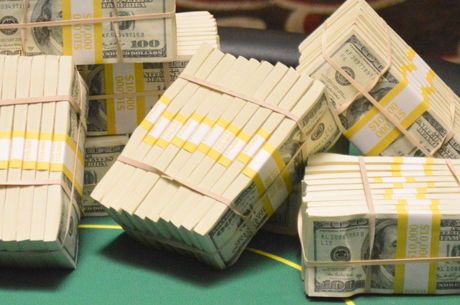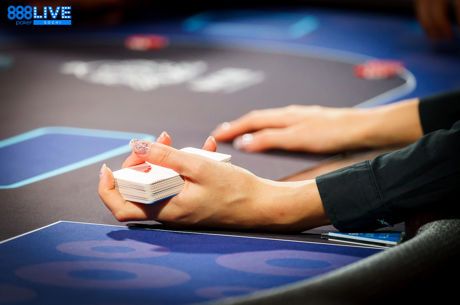Strategy Vault: Value Betting Against Recreational Players with Mike Ziemba

Digging deep into the PokerNews strategy archives can unearth some buried treasure for seekers of strategy gems. In this edition of the Strategy Vault, we look back to share a conversation with online pro Mike Ziemba about value betting versus novice or recreational players. A former SuperNova Elite on PokerStars, Ziemba now lives in Las Vegas where he plays full-time on WSOP.com.
PokerNews: Once you’ve pegged a player as recreational, what is your general game plan with regard to getting value from them?
Mike Ziemba: I try to recognize tendencies or leaks. There are different types of recreational players, and not all of them play the same. So, I need to figure out how to exploit them, and in what situations.
Is it fair to say that you can categorize most recreational players as either bad passive or bad aggressive?
I would agree with that. A big error recreational players make is that they forget the reasons why they are betting. Are they betting for a bluff? Are they betting for value? Or, are they betting to protect their hand?
Recreational players usually have a harder time reading hands and ranges of opponents. So at times, it can be harder to make more complex bluffs versus someone who is not as familiar with the game. In certain situations, it’s easier to extract more value, and/or overbet versus a fish.
Against a fish, I generally try to get involved with more hands preflop in position. Or, open my preflop range. I have a huge advantage postflop against a fish, and they will usually make a large error, resulting in a large profit for me.
Postflop, how does the width of your value betting range change against a bad passive player versus a bad aggressive player? For example, does your value betting range narrow or widen, and do you go for more or less streets of value with top-pair types of hands?

If a player is passive, I’m more likely to bet all three streets if I believe I have the best hand in or out of position. Out of position, it’s harder to check-raise a passive player since they’re more likely to check than bet. My value betting range is always wider considering they’re getting involved with worse hands preflop, and postflop.
The texture of boards, positions, stack sizes, and reads plays into my conclusion of what bet sizes I want to make. Against a bad aggressive player, I’m more likely to try and let them “hang” themselves — meaning I may check-call the flop and turn with the best hand, and check-raise on some rivers.
What about bet-sizing against a fish versus good players? What are some general guidelines on how it changes?
A lot of bet-sizing has to do with ranges and board textures. Against good players, it’s much harder to get them to call three large bets with worse hands, so you may bet smaller, or give them better odds to call. Usually, when you see two good players making large bets on every street, they both have good hands, and one happens to be better than the other. Or, it’s a cooler in an unavoidable spot. Against a fish, it’s much more likely you can make large bets on each street, and get a player holding a very bad hand to call on each street.
Let’s talk through a hand you played that illustrates these ideas about value betting versus a recreational player. Here’s the situation:
- Game: $1/$2 no-limit hold’em cash game, six-handed
- Stack sizes: Hero $218.90, Villain $172.90
- Preflop: Hero is dealt KxQx-offsuit and raises under the gun to $6. Villain calls on the button.
What type of beginning player was your opponent in this hand?
In this hand, my opponent had been playing 92 percent of hands after a 70-hand sample. These types of players are almost always “free” money to the table. Considering he was playing so many hands, I opened my range a bit in first position. King-queen offsuit is a great hand against a fish playing nearly every hand. Preflop, it’s hard to put him on a range, but we can almost assume his range is any two cards.
- Flop: The flop comes Q♠7♠2♣. Hero bets $9. Villain calls.
So I put in a normal continuation bet on the flop. Once he called, it was still hard to tell what he could have called with. He was calling with nearly everything.
- Turn: The turn is the 8♦. Hero bets $24. Villain calls again.
Talk about your thought process on the turn. How did you decide on your bet size, and how would it change if you were flatted on the button by a good, solid player?
The turn 8♦ was a great card because there are still no flushes or straights on the board. It was highly unlikely that this player had pocket aces, kings, queens, sevens, twos, or ace-queen in his range. The reason for betting larger is that this player will call almost any bet with any sort of draw or paired hands, so we value bet much larger. Against a good player, it’s very hard to get value against a draw given the odds they are getting on the turn.
- River: The river is the 7♣. Hero goes all in for $179.90. Villain folds.

The river paired the board and didn’t complete much of anything, so it goes back to the exact same thing I was saying about a passive fish. When I check, even if he does have a missed draw, he’s more likely to check back.
Why did you decide to shove instead of putting in a pot-sized bet?
I decided to overbet the river hoping he’d call with any worse queen, pair, or possibly ace-high, which was unlikely but possible. If he did happen to have a random seven in his hand, that’s fine. In this spot, he’s either calling or folding. Since I’m pretty sure I have the best hand a large percentage of the time, I went for max value. Considering he was a passive fish, I believe he’d be calling with any pair. When the board pairs, and nothing completes, it can also look like I have some sort of missed draw.
What would you have done on this river against a good player?
Against a good player, I would be more likely to check and then decide what to do on the river. Considering the board paired, I would probably check and then call. Ace-queen and better hands are in a good player’s range, making it a much harder decision. Also, there’s something to be said about a good player’s range with the seven pairing the board. If you notice, that takes out a lot of pair plus flush draw combos on the flop making trips. So, if I thought he had a pair plus a flush draw, I would be likely to think it was A♠2♠.
Want to stay atop all the latest in the poker world? If so, make sure to get PokerNews updates on your social media outlets. Follow us on Twitter and find us on both Facebook and Google+!










